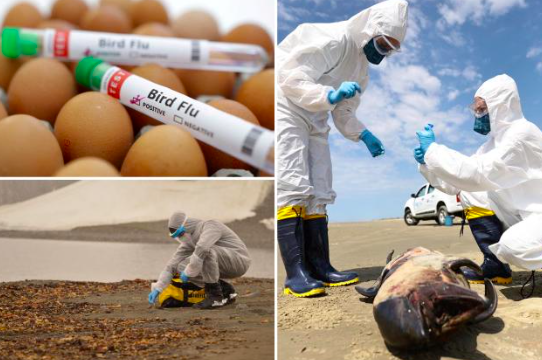Experts have raised alarms over the emergence of a lethal bird flu pandemic, cautioning that it could dwarf the impact of COVID-19. This warning comes following the identification of the H5N1 strain of avian influenza in an individual from Texas who had contact with infected dairy cows.
### Growing Concerns
The spread of bird flu has become a significant worry for governments and the poultry industry due to its potential for human transmission and the devastating effects it could have on poultry populations.
Despite fewer reported outbreaks this season, bird flu has demonstrated rapid spread, even reaching Antarctica and affecting an increasing number of mammals. This has sparked fears regarding its potential evolution into a more severe threat to human health.
### Evolutionary Threat
While sustained human-to-human transmission has not yet been observed, the European Food Safety Authority (EFSA) warns of the global evolution of bird flu viruses, potentially leading to new strains with mutations conducive to mammalian adaptation.
Suresh Kuchipudi, a prominent bird flu researcher from Pittsburgh, underscores the longstanding pandemic risk posed by the H5N1 virus, which has demonstrated its ability to infect various mammalian hosts, including humans.
### Pandemic Potential
Expressing concerns over a possible pandemic, John Fulton, a pharmaceutical industry consultant, states, “This appears to be 100 times worse than COVID or it could be if it mutates and maintains its high case fatality rate.”
### Symptoms and Detection
Symptoms of bird flu resemble those of other flu strains, ranging from cough and body aches to severe cases of life-threatening pneumonia. A recent case in Texas showcased “eye redness (consistent with conjunctivitis)” as the sole symptom, as reported by the Centers for Disease Control and Prevention (CDC).
### Mitigation Efforts
While the risk to the general public is presently deemed low, the detection of the virus in cattle raises concerns about potential mutations enhancing transmissibility to humans. Efforts are underway to develop a vaccine for the virus, with promising candidate vaccine viruses offering hope in combating H5N1.
According to the World Health Organization, approximately 52% of humans infected with H5N1 since 2003 have succumbed to the virus.















